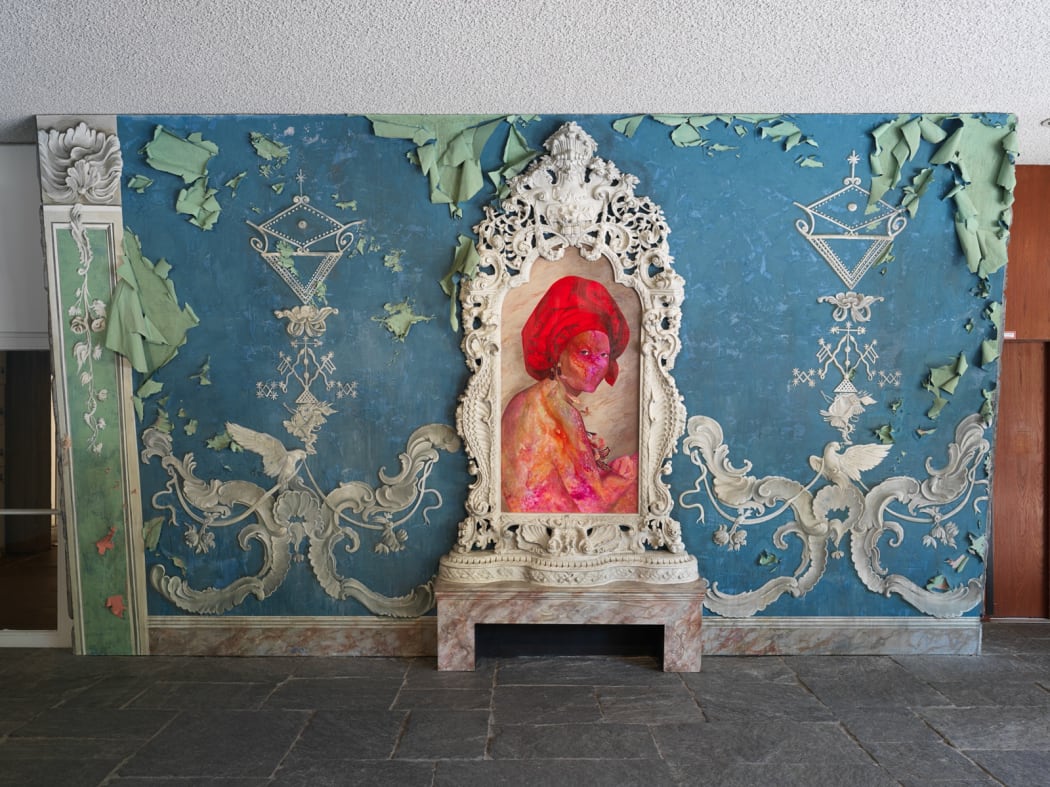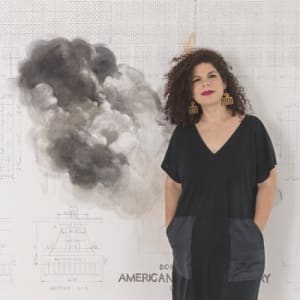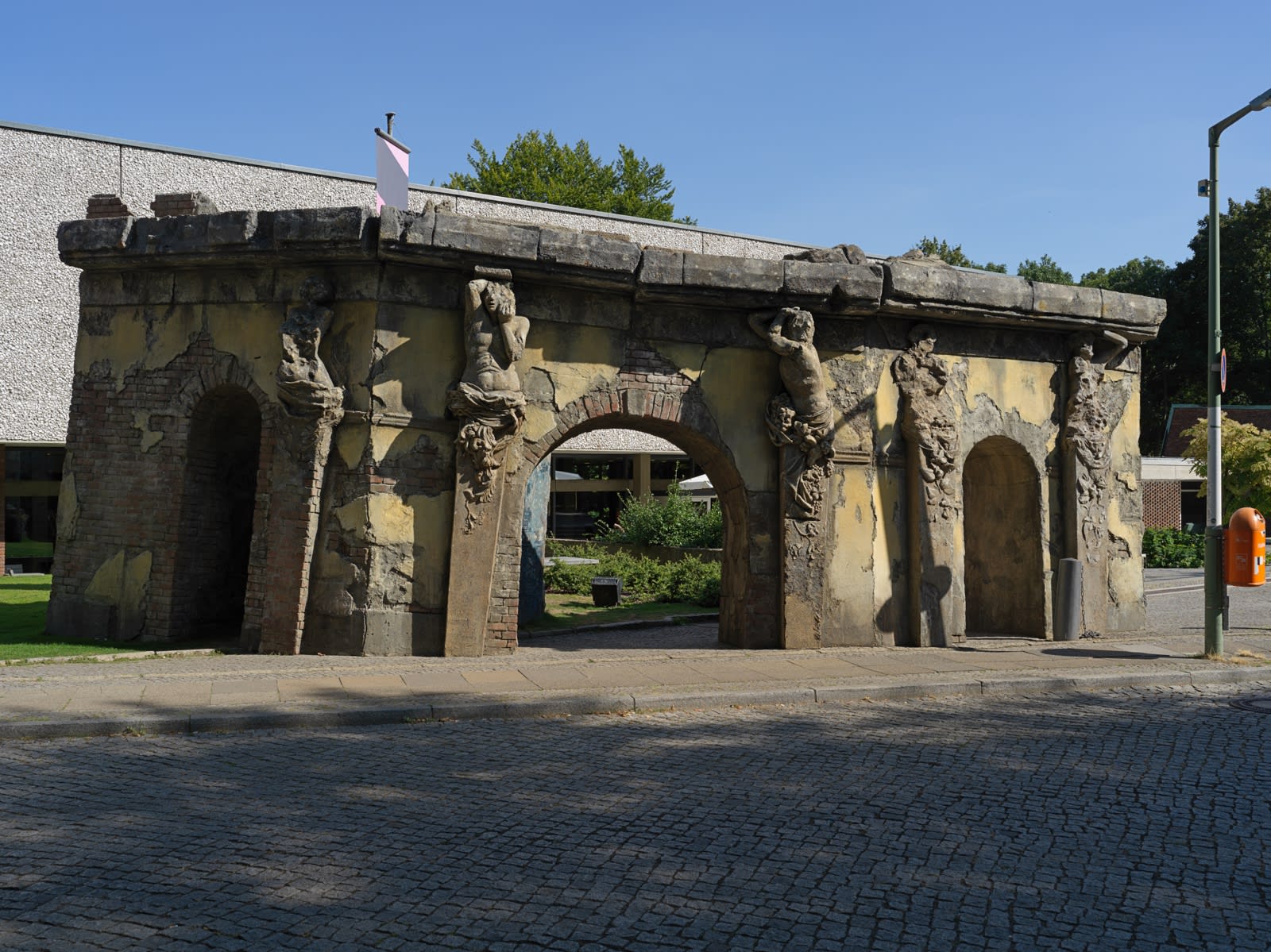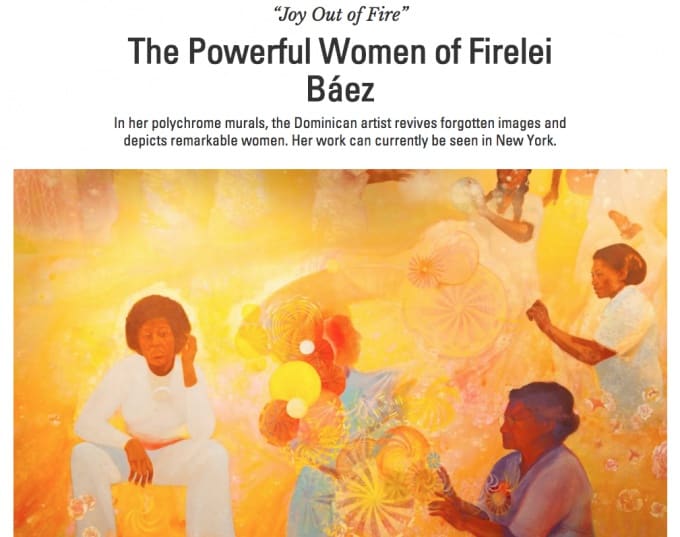

We’re so proud of Firelei Báez for her contribution to this year’s Berlin Biennale! So much great coverage of her work has come out of the event. Mutual Art asked Future Generation Art Prize coordinator Björn Geldhof about exciting young artists. His response:
“Two of the absolute highlights of this year’s very interesting [Berlin] Biennale were, first, Dineo Seshee Bopape, who took over the central hall. Secondly, there was Firelei Báez, who also was shortlisted for the prize in 2017, and was noticed very strongly in Venice. She also made incredible work for the Berlin Biennale.”

Firelei Báez, 19° 36' 16.89" N, 72° 13' 6.95" W) / (52.4042° N,13.0385° E", at the Berlin Biennale 2018

Firelei Báez, at the Berlin Biennale 2018
Aljazeera offered this haunting description of Firelei’s installation:
“Firelei Baez’s works greet visitors as they enter the exhibition rooms. The two large acrylic guache-on-paper works depicting individual soldiers and armies, their green and brown khaki fading into sun-bleached, apparently empty landscapes. One of the larger works, “Index (given the ground one has to actively look away)” shows, in the foreground, a soldier with his back turned to observers, pointing a curved sabre – a grim reaper’s scythe, positioned in the stylised fencer’s pose – towards a shadowy set of silhouettes in the distance.
They, over there, are an unidentifiable mass of an inconvenient other, in a valley adjacent to mountains, which may, in fact, be a city of tents created for the displaced. The soldier’s back is erupting in glowing flames, oranges and yellows, and spewing a cloud of thick smoke that rises to the left of his body. It reminds us of the images of oil wells set on fire as the Iraqi army disintegrated and retreated when US and allied forces attacked them in 1990. But there are no identification marks on the soldier to align him with a particular nation; his back is turned to us, so we cannot recognise him by face.
The trim on his uniform and the washed out, mottled greens and browns of the uniforms and helmets on the figures in an adjacent large-scale work tells us that these are men doing the work of some powerful nation and its leaders – it could be any megalomaniac who has sent this army to conquer and access resources, convinced that he is in the right.”

Also, Contemporaryand recently published this wonderful article about Firelei. We are so proud of all the great things the press is saying about this extraordinarily talented artist!
